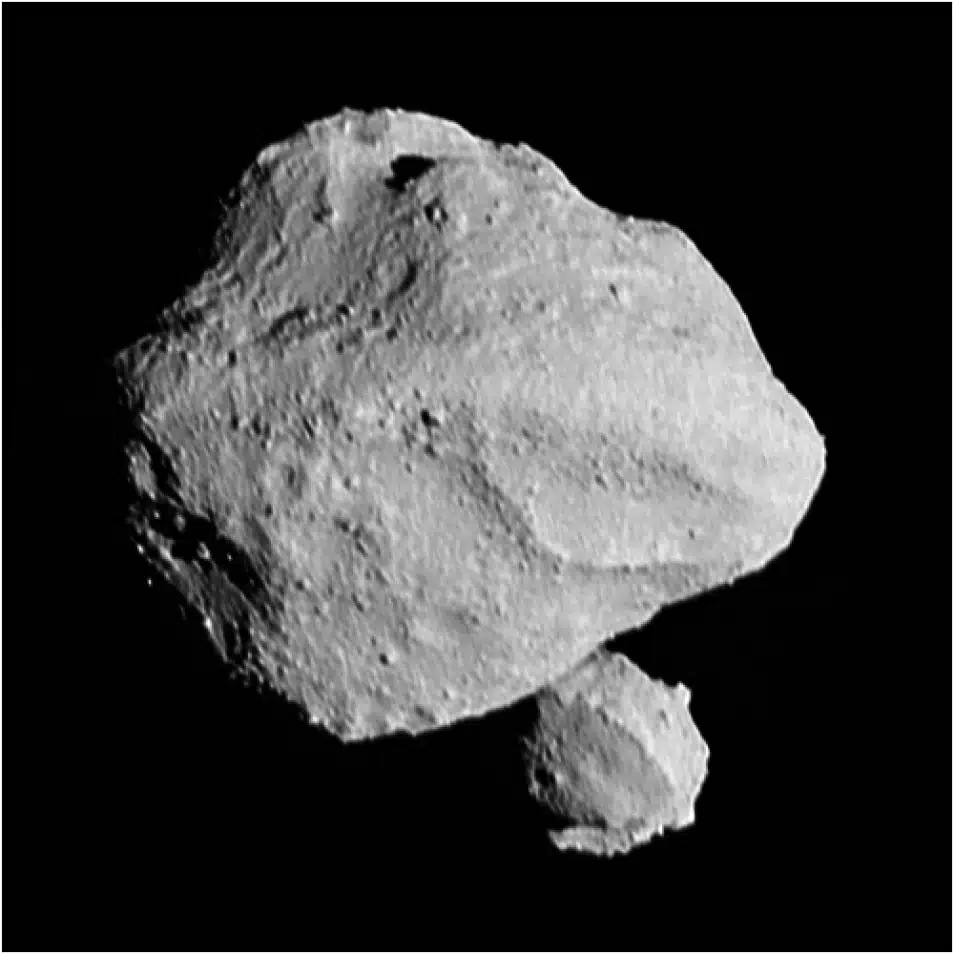Surprise: It turns out that asteroid Dinkenish is not alone. The Lucy spacecraft flew by the duo the day before yesterday and captured a beautiful series of images.
The Lucy space probe was launched more than two years ago and will visit many asteroids and so-called Trojans in the next decade. Asteroids are the remains of the material from which the outer planets of our solar system were formed. We hope they will provide insight into the conditions under which the solar system formed more than four billion years ago.
Lucy surpassed her first goal this week: 152,830 Dinkenish. An asteroid with a diameter of 790 metres, it was only discovered in 1999 due to its size. This relatively small space rock has an elliptical orbit, meaning its distance from the Sun ranges from 290 million to 365 million kilometers. Dinkenish had never been seen up close before, and it turns out he has a surprise in store.
A small moon measuring 220 metres
Dinkenish is guided by a natural satellite with a diameter of 220 metres. Scientists from the US space agency NASA have already questioned this in recent weeks, as Dinkenish’s brightness is constantly changing. In the pictures below you see the Dinkinish with the little fellow in the foreground. The two asteroids appear to be moving quickly relative to each other, but this is not the case. This motion is caused by the Lucy space probe, which passes near the duo at a speed of 4.5 kilometers per second. You can compare it to driving on a highway: the trees along the highway are flashing, while the house in the distance is moving at a slower speed.
Dinkenish is the smallest asteroid in the asteroid belt ever visited by a spacecraft. Smaller asteroids have been visited by spacecraft and landers, such as Bennu (2018-2020), Itokawa (2005), and Dimorphus (2022), but they are not in the asteroid belt between Mars and Jupiter.
Difficult test
The flight across Dinkenish was a test for scientists, that is, to test the tracking system. This system ensures that Lucy automatically follows an asteroid during flight. “The system works well,” concludes Tom Kennedy, a Lockheed Martin engineer. The discovery of a moon near Dinkenish has added another challenge for scientists, but fortunately this has not posed a problem. “Simulation, testing and practice: that’s one thing. But when you see in real life that something works: that’s different.”
Now Lucy is traveling. First towards the ground to get the gravity pendulum Then set the path to 52246 DonaldJohansson. The spacecraft hopes to reach the four-kilometre-wide asteroid on April 20, 2025. It will be followed by Eurybates (2027), Polymele (2027), Leucus (2028), Aurus (2028), and Patroclus-Menotius (2033).
Lucy’s ultimate goal is to learn about the history of our solar system. There are still some blind spots that Lucy hopes to remove. Who knows, we might learn more about the origins of organic matter – and thus ultimately life – on Earth.

“Coffee buff. Twitter fanatic. Tv practitioner. Social media advocate. Pop culture ninja.”












More Stories
“Ask at least one question in return.”
According to research, people with this sleep rhythm live longer.
13 municipalities in the province of Seville have mosquitoes carrying the Nile virus